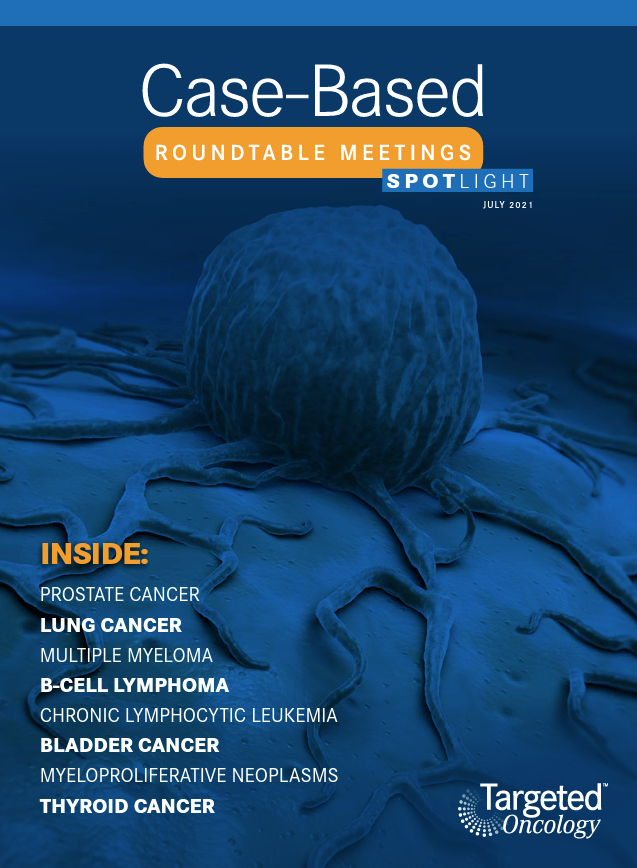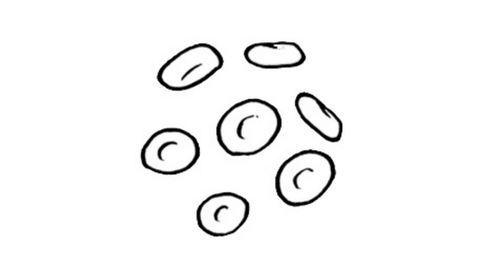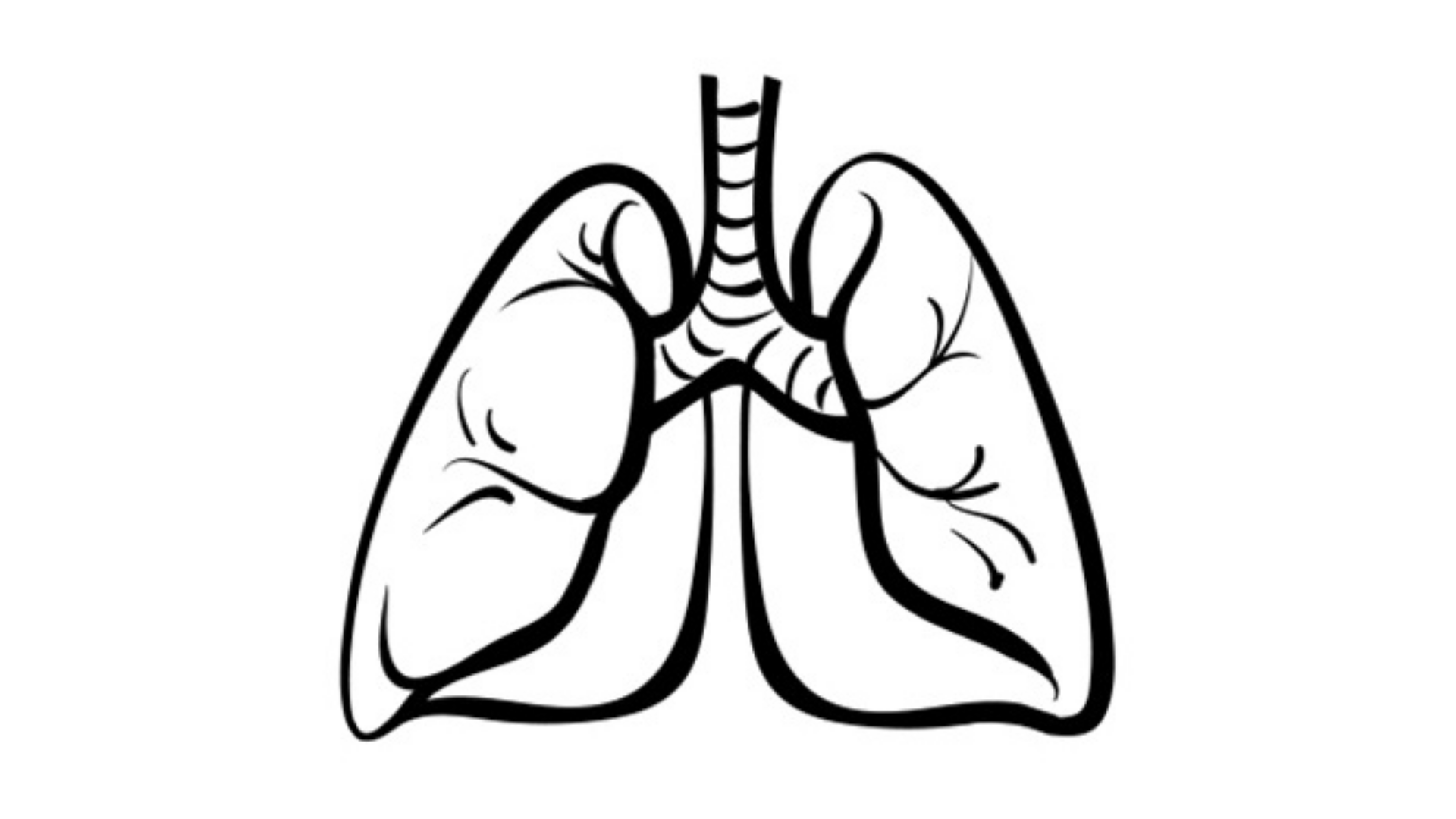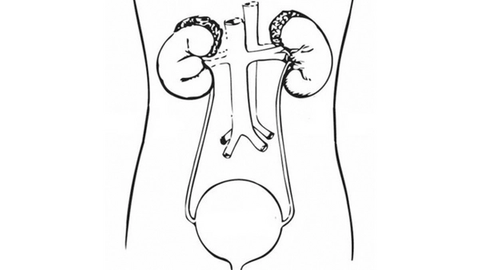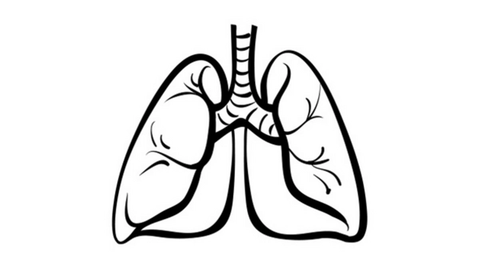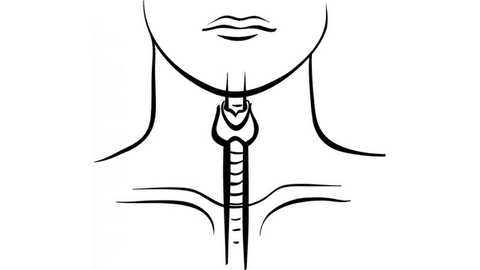Considerations for Immunotherapy-Based Combinations in the Frontline Treatment of PD-L1–Positive NSCLC
Ronald J. Scheff, MD, reviews the molecular testing practices for non–small cell lung cancer and frontline treatment of patients with PD-L1-positive non–small cell lung cancer during a Case-Based Roundtable event.
Ronald J. Scheff, MD

Ronald J. Scheff, MD, reviews the molecular testing practices for non–small cell lung cancer (NSCLC) and frontline treatment of patients with PD-L1-positive NSCLC during a Case-Based Roundtable event.

Targeted Oncology™: What type of molecular testing would you obtain in a patient such as this?
SCHEFF: [Frontline testing recommendations for nonsquamous NSCLC from the NCCN [National Comprehensive Cancer Network] guidelines [include] EGFR, ALK, ROS1, BRAF, NTRK, MET exon 14 skipping, and RET.1 These are all standard targets for targeted therapy, so they need to be conducted as part of our broad molecular testing. [Using] next-generation sequencing [NGS] is recommended, and if there isn’t sufficient tissue, plasma testing is a very good fallback modality.

So this patient’s molecular testing was negative for an actionable mutation. The microsatellite DNA was stable, but TMB was 6.

What are the recommended first-line therapies for a patient such as this?The NCCN guidelines recommend [using a] platinum [agent, specifically, carboplatin or cisplatin] plus pemetrexed [Alimta] plus pembrolizumab [Keytruda], [as the preferred] category 1, [first-line therapy].1 The [other first-line, category 1 therapy is carboplatin plus paclitaxel plus bevacizumab [Avastin] plus atezolizumab [Tecentriq]. Carboplatin plus albumin-bound paclitaxel plus atezolizumab is another recommended first-line therapy, though not a category 1 option. Nivolumab [Opdivo] plus ipilimumab [Yervoy] is a category 1 treatment, [which can be useful in certain circumstances.] Pembrolizumab is category 2B as a single agent, but there’s still evidence for that.
Up until the very recent past, platinum-doublet chemotherapy was the standard. Now we’ve moved into an era of using immunotherapy instead of chemotherapy or in addition to chemotherapy.
What data support the use of these treatment options in the frontline setting?
KEYNOTE-189 [NCT02578680] was a very important study, and it looked at [patients with] stage IIIB or IV nonsquamous NSCLC [with no previous treatment for metastatic disease].2 All PD-L1 levels were included. [Patients were eligible if they had] no activating or actionable mutations, decent or good ECOG performance status, no untreated brain metastases, and no inflammatory or immune lung disease or pneumonitis that [required systemic immunosuppressive treatment (eg, glucocorticoids)].
Patients who were randomized to the placebo arm received carboplatin or cisplatin with pemetrexed plus placebo every 3 weeks for 4 cycles, followed by pemetrexed plus placebo maintenance.2 Crossover was allowed to pembrolizumab at progression of disease. In the study arm, it was the same chemotherapy backbone, but instead of placebo, patients received pembrolizumab. They received pembrolizumab with chemotherapy, and then they received pembrolizumab with pemetrexed for maintenance. In the placebo group, crossover was allowed to pembrolizumab if progression of disease [was verified]. The primary end points were overall survival [OS] and progression-free survival [PFS].
The OS [was improved with] the addition of pembrolizumab to chemotherapy; the HR [was 0.56, which was statistically significant.3 Median OS was 22 months in the pembrolizumab [plus chemotherapy group] versus 10.7 months [in the placebo group]. There was a 2-year survival rate of 45.5% [with pembrolizumab] versus 29.9% [with placebo].
Additionally, OS by PD-L1 level [was evaluated using] TPS.3 For those with a PD-L1 level less than 1%, there was a statistically significant advantage for adding pembrolizumab [HR, 0.52; 95% CI, 0.36-0.74]. Same thing is true [with those who had PD-L1 levels of] 1% to 49% [HR, 0.62; 95% CI, 0.42-0.92], which is in the same category as our case study patient. KEYNOTE-189 favors the use of pembrolizumab with chemotherapy across all PD-L1 expression levels.
What trial data support the use of a single-agent ICI?
[That would be data from] the KEYNOTE-042 study [NCT02220894].4,5 Again, it is a familiar patient population: untreated, locally advanced, metastatic NSCLC of any histology, no sensitizing EGFR or ALK alterations, good performance status, no untreated or unstable brain metastases, and no history of pneumonitis that required systemic steroids. Patients were randomized 1:1 to pembrolizumab [monotherapy] versus chemotherapy. And one nice thing about this trial is that the chemotherapy was the investigator’s choice. The common regimens were allowed, so patients could get either [carboplatin plus paclitaxel] or [carboplatin plus] pemetrexed.
Those with PD-L1 [levels] greater than 50% [had a median OS of 20 months in the pembrolizumab group compared with 12.2 months in the chemotherapy group], significantly favoring [monotherapy with] pembrolizumab [HR, 0.69; 95% CI, 0.56-0.85; P = .0003].4,5 But [there was a] less pronounced benefit [with] lower PD-L1 levels.
So what’s relevant for our patient, who has a [TPS of] 1% to 10%, is to look at the population in KEYNOTE-042 who were between 1% and 49%.4,5 What the [exploratory analysis of those between 1% and 49%] in this trial showed is that single-agent pembrolizumab was equivalent to using platinum-doublet chemotherapy [HR, 0.92; 95% CI, 0.771.11]. So this study is an outlier in that, in this population of low PD-L1 [levels], it’s not a positive trial. It really shows equivalence. But it is certainly an option [to use singleagent pembrolizumab] for patients who are not good candidates for chemotherapy.
What about a 4-drug regimen for such a patient in the first-line setting?
The IMpower150 study [NCT02366143]6 is a bit of a complicated trial; [it has 3 arms]. It’s our same untreated population, and there are people who have never received chemotherapy before. In arm C, [treatment was] carboplatin plus paclitaxel plus bevacizumab, which is a standard regimen. Maintenance therapy was bevacizumab alone. Arm B adds the ICI atezolizumab to the carboplatin plus paclitaxel plus bevacizumab triplet to yield a 4-drug regimen. [This was designed to assess whether atezolizumab efficacy was enhanced by the addition of bevacizumab.] Treatment was followed by maintenance [therapy] that’s very biologically driven with atezolizumab plus bevacizumab. [Arm A was the triplet of atezolizumab plus carboplatin plus paclitaxel plus bevacizumab, followed by maintenance therapy with atezolizumab alone. No crossover was permitted between the study arms.]
[Focusing on] arm B versus arm C, there was an advantage [in OS rate at 12 and at 24 months] to adding atezolizumab to bevacizumab, carboplatin, and paclitaxel.6,7 It’s statistically significant; the HR is 0.78 [95% CI, 0.64-0.96; P = .02], and it does not cross 1. Unlike the other trials we’re discussing, [this trial] included patients who had EGFR or ALK mutations.2 [In the intention-to-treat population, median PFS was longer in arm B (8.3 months) than in the control arm (6.8 months), including those who had EGFR or ALK mutations (stratified HR, 0.61; 95% CI, 0.52-0.72)]. So it’s a very nice illustration [of the role of immunotherapy in a] regimen that is feasible to consider for these patients. Also, in the subgroup analysis, patients with liver metastases seemed to benefit from the addition of atezolizumab to chemotherapy.
Why has the combination of nivolumab and ipilimumab received a category 1 recommendation in this setting? Then there is the CheckMate 227 study [NCT02477826], which looked at stage IV disease, no prior systemic therapy for stage IV, and no known sensitizing alterations.8 The trial is split into 2 parts, one that was done [in patients with] PD-L1 1% or greater and a similar study [in patients who had negative] PD-L1 staining. [In those with PD-L1 1% or greater, it was a] 3-arm trial. There’s [ipilimumab plus nivolumab] versus chemotherapy alone versus nivolumab alone.
[Focusing on] the ipilimumab plus nivolumab arm versus the chemotherapy arm, in patients with a positive PD-L1, at any level of positivity, [at the] 3-year update, the [ipilimumab plus nivolumab arm had an OS of 17.1 months] versus [an OS of 14.9 months with] chemotherapy; [with an] HR of 0.79.9,10 So this was an example of an all-immunotherapy regimen, ipilimumab plus nivolumab, being superior to an all-chemotherapy regimen.
When we break out the [patients who had a] PD-L1 of 1% to 49% [in an additional exploratory subgroup analysis], we don’t see a statistically significant advantage of the [ipilimumab plus nivolumab combination] compared with chemotherapy in that subgroup, which is interesting.9 [The median OS for both groups was 15.1 months (HR, 0.94; 95% CI, 0.75-1.18)]. [In this subgroup analysis,] the benefit is statistically significant only for the PD-L1 expressors of 50% or higher, [with a median OS of 21.2 months for ipilimumab plus nivolumab and 14.0 months for chemotherapy (HR, 0.70; 95% CI, 0.55-0.90)].
The adverse events [AEs] with immunotherapy versus with chemotherapy are different, as you would expect. Looking at all [treatment-related AEs of any grade reported at 15% or higher], there were more in the [chemotherapy-treated patients than in the] immunotherapy-treated patients, 82% versus 77%.9 But if you look at specific toxicities [that are grade 3 to 4], diarrhea was more common in the immunotherapy-treated patients, as was rash. Fatigue at grade 3 or 4 severity was similar in the 2 arms, but fatigue at any grade was more [common] in the chemotherapy arm (18.9% vs 14.4% with immunotherapy)]. [Decreased appetite, nausea, anemia, and neutropenia were all more commonly reported] in the chemotherapy arm. So no surprises here. The chemotherapy toxicities were there, and the immunotherapy toxicities of diarrhea and rash were present. [Overall treatment-related] serious AEs were more common in the immunotherapy-treated arm [18.4% versus 10.7% with chemotherapy]. [AEs of any severity leading to] treatment discontinuation were more common in the immunotherapy-treated arm [18.1% versus 9.1% with chemotherapy]. [Serious AEs with the] immunotherapy doublet [resulted in] 12% of patients having to discontinue therapy because of the toxicity. Treatment-related deaths were seen in both arms, a little bit more common in the immunotherapy arm [1.4% versus 1.1% with chemotherapy], which is obviously something to think about.
[Then there is] CheckMate 9LA [NCT03215706], a study of nivolumab plus ipilimumab plus chemotherapy versus chemotherapy alone.11,12 [Again, the study looked at the] same patient population: stage IV disease, no prior systemic therapy, no mutations, good performance status. [Results of CheckMate 9LA] showed a benefit [in OS when] nivolumab plus ipilimumab [is added] to chemotherapy.11 Median OS was 15.6 months in the nivolumab plus ipilimumab plus chemotherapy arm compared with 10.9 months in the chemotherapy arm [HR, 0.66; 95% CI, 0.55-0.80], which is statistically significant. Across all PD-L1 levels, the HR favored the addition of nivolumab plus ipilimumab to chemotherapy. In our patient’s group, the 1% to 49% group, that was true as well [HR, 0.61; 95% CI, 0.44-0.84], [which was] statistically significant. So that’s a valid strategy.
The treatment-related AEs in [CheckMate 9LA were] typically associated with chemotherapy.11 Interestingly and importantly, the addition of [nivolumab plus ipilimumab] did not add to chemotherapy toxicity. In fact, the toxicity was a bit less with the addition of nivolumab plus ipilimumab. The toxicities that would be expected from immunotherapy [were there]; skin rash was common but rarely [experienced at a] grade 3 or 4.
CheckMate 227] led to the FDA approval of [nivolumab plus ipilimumab] for first-line metastatic NSCLC for positive PD-L1–staining tumors.13 And [CheckMate 9LA] led to the approval of the addition of [nivolumab plus ipilimumab] to chemotherapy [in this population].14
If the decision were made to change therapy, what second-line therapy would you be most likely to offer this patient, and what data support your choice?
Ramucirumab [Cyramza] plus docetaxel was studied in the] REVEL trial [NCT01168973]; it included [patients with] stage IV [disease] who had received 1 platinum-based chemotherapy regimen, with or without maintenance. Prior bevacizumab was allowed, and it included all histologies and a performance status of 0 or 1.15 Patients who had received prior paclitaxel in their first-line platinum doublet were also included.

Patients were randomized to receive ramucirumab plus docetaxel versus docetaxel plus placebo.15 Ramucirumab is a blocker of the VEGF pathway. It’s a VEGF receptor-2 antagonist antibody, and what’s interesting is that this trial included squamous cell histology.15,16 This is different from the studies that led to the approval of bevacizumab. Another thing to note about this trial is that it was done a few years ago, before the era of frontline immunotherapy. So in this study, these patients had received chemotherapy or chemotherapy with bevacizumab, but they had not received immunotherapy.15
[The patients were] treated until progression of disease or unacceptable toxicity, with a primary end point of OS.15 This was a positive study. The median OS was 10.5 months [with ramucirumab plus docetaxel] versus 9.0 months [in the control arm]; [it was] statistically significant [with an] HR of 0.86 [95% CI, 0.75-0.98; P = .02]. The median PFS [of 4.5 months for ramucirumab plus docetaxel compared with 3.0 months for the control arm] showed an advantage for the addition of ramucirumab [HR, 0.76; 95% CI, 0.68-0.86; P < .0001]. And overall response rate was 23% versus 14%, also favoring the addition of ramucirumab [odds ratio, 1.89; 95% CI, 1.41-2.54; P < .0001].
There’s a poststudy exploratory subgroup analysis that looked at refractory patients; that is relevant to our discussion here.17 [It characterized the treatment effect of patients in the REVEL study who were refractory to prior first-line treatment.] They studied patients who had [remained] on first-line treatment less than or equal to 4 weeks versus less than or equal to 8 weeks versus less than or equal to 12 weeks from initiation of frontline therapy. The median OS in [each of] these 3 subgroups favored the addition of ramucirumab to docetaxel versus placebo plus docetaxel. The less than or equal to 4 weeks group had an 8.8-month median OS for patients who received ramucirumab plus docetaxel versus 3.2 months for docetaxel plus [placebo] [HR, 0.40; 95% CI, 0.22-0.73]. Even the patients who had 12 weeks or less of response on first-line therapy had a trend favoring ramucirumab being added to docetaxel [9.2 months versus 7.2 months with placebo] [HR, 0.85; 95% CI, 0.68-1.05]. And the same benefit was seen in PFS. For these early progressors on platinum doublet therapy, when you go to second-line therapy, it would seem to be important from this subgroup analysis to add ramucirumab.
[For the] safety outcomes, [data from] the overall REVEL trial showed that treatment-related AEs occurred in both arms.15,17 Because of toxicity, treatment discontinuation was more common, 15% [with the addition of ramucirumab to docetaxel] versus 9% [with placebo]. Dose adjustments were more common [with the addition of ramucirumab to docetaxel]. Deaths were equivalent; this is interesting because you have to wonder about hemorrhage. [Patients with] squamous cell [disease] are included in this trial, but in fact, the patients were screened carefully. Any patients with cavitary lung lesions, history of more than a teaspoon of hemoptysis, active brain metastases, or major blood vessel [invasion or encasement] were excluded. So in this screened population, there was no excessive death from using ramucirumab. Overall, serious AEs were the same in both arms.
REFERENCES:
1. NCCN. Clinical Practice Guidelines in Oncology. Non-small cell lung cancer, version 5.2021. Accessed June 8, 2021. https://bit.ly/3vXNyDP
2. Gandhi L, Rodríguez-Abreu D, Gadgeel S, et al. Pembrolizumab plus chemotherapy in metastatic non–small-cell lung cancer. N Engl J Med. 2018;378(22):20782092. doi:10.1056/NEJMoa1801005
3. Gadgeel S, Rodríguez-Abreu D, Speranza G, et al. Updated analysis from KEYNOTE-189: pembrolizumab or placebo plus pemetrexed and platinum for previously untreated metastatic nonsquamous non–small-cell lung cancer. J Clin Oncol. 2020;38(14):1505-1517. doi:10.1200/JCO.19.03136
4. Lopes G, Wu YL, Kudaba I, et al. Pembrolizumab (pembro) versus platinum-based chemotherapy (chemo) as first-line therapy for advanced/metastatic NSCLC with a PD-L1 tumor proportion score (TPS) ≥ 1%: open-label, phase 3 KEYNOTE-042 study. J Clin Oncol. 2018;36(suppl 18):LBA4. doi:10.1200/ JCO.2018.36.18_suppl.LBA4
5. Mok TSK, Wu YL, Kudaba I, et al. Pembrolizumab versus chemotherapy for previously untreated, PD-L1-expressing, locally advanced or metastatic non-small-cell lung cancer (KEYNOTE-042): a randomised, open-label, controlled, phase 3 trial. Lancet. 2019;393(10183):1819-1830. doi:10.1016/S0140-6736(18)32409-7
6. Socinski MA, Jotte R, Cappuzzo F, et al. Overall survival (OS) analysis of IMpower150, a randomized Ph 3 study of atezolizumab (atezo) + chemotherapy (chemo) ± bevacizumab (bev) vs chemo + bev in 1L nonsquamous (NSQ) NSCLC. J Clin Oncol. 2018;36(suppl 15):9002. doi:10.1200/JCO.2018.36.15_suppl.9002
7. Socinski MA, Jotte RM, Cappuzzo F, et al. Atezolizumab for first-line treatment of metastatic nonsquamous NSCLC. N Engl J Med. 2018;378(24):2288-2301. doi:10.1056/NEJMoa17169488
8. Hellmann MD, Ciuleanu TE, Pluzanski A, et al. Nivolumab plus ipilimumab in lung cancer with a high tumor mutational burden. N Engl J Med. 2018;378(22):20932104. doi:10.1056/NEJMoa1801946
9. Hellmann MD, Paz-Ares L, Bernabe Caro R, et al. Nivolumab plus ipilimumab in advanced non–small-cell lung cancer. N Engl J Med. 2019;381(21):2020-2031. doi:10.1056/NEJMoa1910231
10. Ramalingam SS, Ciuleanu TE, Pluzanski A, et al. Nivolumab + ipilimumab versus platinum-doublet chemotherapy as first-line treatment for advanced nonsmall cell lung cancer: three-year update from CheckMate 227 part 1. J Clin Oncol. 2020;38(suppl 15):9500. doi:10.1200/JCO.2020.38.15_suppl.9500
11. Reck M, Ciuleanu TE, Cobo Dols M, et al. Nivolumab (NIVO) + ipilimumab (IPI) + 2 cycles of platinum-doublet chemotherapy (chemo) vs 4 cycles chemo as first-line (1L) treatment (tx) for stage IV/recurrent non-small cell lung cancer (NSCLC): CheckMate 9LA. J Clin Oncol. 2020;38(suppl 15):9501. doi:10.1200/ JCO.2020.38.15_suppl.9501
12. Paz-Ares L, Ciuleanu TE, Cobo M, et al. First-line nivolumab plus ipilimumab combined with two cycles of chemotherapy in patients with non-small-cell lung cancer (CheckMate 9LA): an international, randomised, open-label, phase 3 trial. Lancet Oncol. 2021;22(2):198-211. doi:10.1016/S1470-2045(20)30641-0
13. FDA approves nivolumab plus ipilimumab for first-line mNSCLC (PD-L1 tumor expression ≥1%). FDA. May 15, 2020. Accessed June 10, 2021. https:// bit.ly/3iyXPDB
14. FDA approves nivolumab plus ipilimumab and chemotherapy for first-line treatment of metastatic NSCLC. FDA. Updated May 27, 2020. Accessed June 10, 2021. https://bit.ly/35tnarl
15. Garon EB, Ciuleanu TE, Arrieta O, et al. Ramucirumab plus docetaxel versus placebo plus docetaxel for second-line treatment of stage IV non-small-cell lung cancer after disease progression on platinum-based therapy (REVEL): a multicentre, double-blind, randomised phase 3 trial. Lancet. 2014;384(9944):665673. doi:10.1016/S0140-6736(14)60845-X
16. Cyramza. Prescribing information. Eli Lilly and Co; 2020. Accessed June 11, 2021. https://bit.ly/3qBqnhB 17. Reck M, Paz-Ares L, Bidoli P, et al. Outcomes in patients with aggressive or refractory disease from REVEL: a randomized phase III study of docetaxel with ramucirumab or placebo for second-line treatment of stage IV nonsmall-cell lung cancer. Lung Cancer. 2017;112:181-187. doi:10.1016/j. lungcan.2017.07.038
